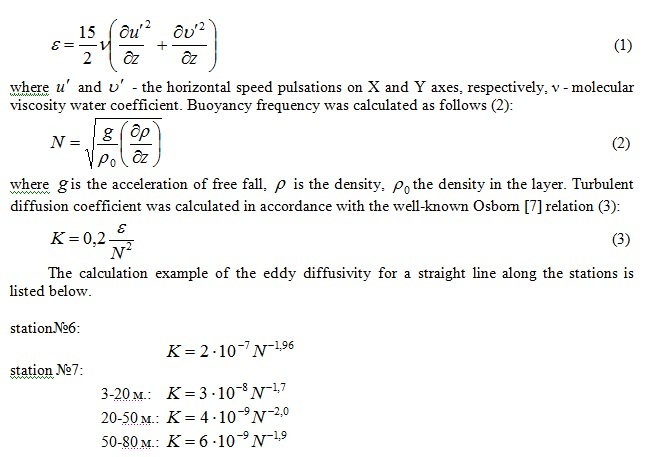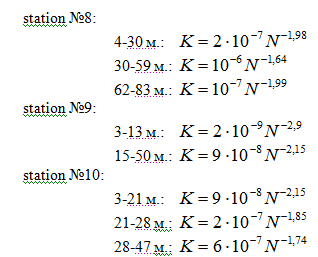BISAC NAT010000 Ecology
BISAC NAT045050 Ecosystems & Habitats / Coastal Regions & Shorelines
BISAC NAT025000 Ecosystems & Habitats / Oceans & Seas
BISAC NAT045030 Ecosystems & Habitats / Polar Regions
BISAC SCI081000 Earth Sciences / Hydrology
BISAC SCI092000 Global Warming & Climate Change
BISAC SCI020000 Life Sciences / Ecology
BISAC SCI039000 Life Sciences / Marine Biology
BISAC SOC053000 Regional Studies
BISAC TEC060000 Marine & Naval
The article highlights the most important studies of oceanographic processes, such as horizontal convection, winter cascading on the shelf and continental slope, the processes in the bottom of the Black Sea. The results of the study of small-scale structure of the shelf upper active layer of the Black Sea in 2014 are discussed. The new information about the distribution of the eddy diffusivity with depth in the coastal part of the Heracleian peninsula is given. The investigated dependence vertical turbulent diffusion coefficient from buoyancy frequency at the active layer is found to be has a quadratic character for the entire shelf area and doesn’t depend on the stratification.
turbulent diffusion, energy dissipation rate, cold intermediate layer, cascading.
I. INTRODUCTION
In the stratified ocean interior there are variety physical mechanisms aimed at the exchange of energy, temperature, salinity between water masses of different scales. Each mechanism operates under certain hydrophysical conditions. Joint study of the processes taking place on different spatial and temporal scales, will set the boundary conditions for the operation of various physical mechanisms for simplifying and solving mathematical models of semi-empirical equation of turbulent diffusion.
The ocean interior is conditionally divided on the layers. Layers are divided according to the action type of some mechanism. For example, in the ocean there are three main layers on the distribution of buoyancy frequency: the upper mixed layer (or a layer of wind mixing), the active layer (up to a maximum frequency of buoyancy), the main pycnocline (or a layer of local mixing) and the bottom layer of the convective exchange.
For the active layer an additional cold intermediate layer can be identified. It is involved in the formation of seasonal thermocline and is formed in the coastal part of the sea (ocean). Coastal waters differ from the open ocean waters by uneven warming of the water surface, which depends on the breadth and depth of the water area, the difference of temporal variability, geothermal.
An important role in maintaining the turbulent exchange plays cascading. It makes contribution to the exchange of water between the shelf and the deep ocean. Its effect is enhanced in the marginal seas, due to the instability of the main pycnocline, impervious surface water on the depth [1].
II. THE MECHANISM OF FORMATION OF THE COLD INTERMEDATE LAYR FOR THE
There are all conditions for the formation and stable presence of the cold intermediate layer in the
The northwestern part of the Black Sea is a broad continental shelf, which narrowing stretches along the western coast to the
Thus, any temperature change in the north-western waters of the Black Sea create the preconditions for the formation of convective horizontal and vertical circulation, which is the main mechanism for the formation of cold sea water.
The cooling of water is begun with river runoff. It is considered the original source of the dense cold waters.
With a small difference of hydro-physical characteristics from surrounding waters, the river plume is a stable structure. This structure is a little stratified, and there may be a separate layer, involving the nearby water in the common stock process, thereby changing the initial geometry of the river plume and consequently - the buoyancy gradient [3].
Coastal waters are cooled, become denser and heavier. They flow down the slope to their isopycnic level and then are distributed as intrusion, thereby displacing the lighter water, resulting in convective motion of water nearby. This theory is applied to the shelf zone of the sea, when the angle between the sea level and the shelf is relatively small.
Taking into account the external effects for the formation mechanism of convective exchange: Earth's rotation, transfer the Ekman, also contributing to an increase of the environmental water in river plume, wind and given runoff direction, the horizontal-vertical convective exchange takes the form of alongshore current [4].
III. USED DATA
Small-scale characteristics of the upper active layer were obtained by a free-falling probe measuring complex Sigma-1, during the expedition in November 2014, on the research vessel Nikolaev in the conditions of the winter circulation of the
IV. ANALYSIS AND METHODOLOGY
Based on the measurement data of the three vector velocity pulsation components, the estimation of dependence of the vertical turbulent diffusion coefficient on the stratification was obtained.
The applied values in the computation were averaged over the depth in increments of 0.1m, 0.3m and 0.5m. The turbulent energy dissipation rate was calculated using the following formula (1):


For each station, the total layer is divided into sub-layers, depending on the buoyancy gradient sign. For example, three sub-layer were selected for the station №7: in the first one the decrease in the buoyancy frequency with depth was observed, in the second - the growth, in the third – the decrease. This division was carried out to check for strict stratification and its influence on the mixing of the sea upper layers.
The presented equalities of the eddy diffusivity have the same index at buoyancy frequency, and does not depend from on the selected layer (independent from the division into sub-layers and stratification). This ratio remains everywhere up to bottom convective mixing layer.
If the sea shelf zone is characterized by intrusive stratification in the presence of horizontal exchange, after the cascading transition to the continental slope being the vertical exchange process intensification process consequence, the intrusions do not exist for a long time and the break up, keeping the temperature of the main cold intermediate layer constant.
Unlike the water circulation mechanism on the shelf, there are other mechanisms forming the vertical exchange on the continental slope. In the deep sea the convective exchange weakens and the main source of vertical mixing becomes instability and overturning internal waves, taking into account topographic features on the sloping bottom [8].
This fact is confirmed by the fact that the shelf temperature is changed in the horizontal direction, i.e. stratification adapts to external conditions, after crossing the shelf - continental slope boundary the temperature vertically changes (the external conditions are adjusted under stratification).
The change of one mechanism to another can be seen in the change of the exponent under N in the expression K(N). For example, data distribution analysis of the turbulent energy dissipation rate and buoyancy frequency, depending on the depth of the coastal part of the Southern Coast of Crimea from the article [9], showed the following expression for the stratified layer of the main pycnocline:.
In the given turbulent diffusion coefficient distribution with depth the studied value minimum was traced at
Thus, due to the action of different mechanisms should be applied a different approach to the determination of the exchange ratios for the upper mixed layer on the shelf and in the deep sea. Cascading plays the main role in the redistribution of water masses on the shelf; it creates preconditions for involving of cold water into the deep sea, due to the formation of intrusions.
1. I. P.Chubarenko “Gorizontal'naya konvekciya nad podvodnymi sklonami,” Kaliningrad : Terra Baltika, 2010, 255s.
2. A.N. Korshenko “Kachestvo moskih vod po gidrohimicheskim pokazatelyam,” Ezhegodnik, Moskva, «Nauka», 2013, 200s.
3. F. M. Pimenta, A. D. Kirwan, P. Huq “On the transport of buoyant coastal plumes,” J. Phys.Oceanogr, 2011, 41, pp. 620-640.
4. C. Moffat, S. Lentz “On the response of a buoyant plume to downwelling-favorable wind stress,” J. Phys.Oceanogr, 2012, pp.1083-1098.
5. A.S. Samodurov, A.M.Chuharev, A.G. Zubov, O.I. Pavlenko “Strukturoobrazovanie i vertikal'nyy turbulentnyy obmen v pribrezhnoy zone Sevastopol'skogo regiona,” Morskoy gidrofizicheskiy zhurnal, 2015 № 6, s. 3-16.
6. A.S. Samodurov, A.M. Chuharev, O.E. Kul'sha “Rezhimy vertikal'nogo turbulentnogo obmena v verhnem stratificirovannom sloe Chernogo morya v rayone Gerakleyskogo poluostrova,” Processy v geosredah, 2015, № 3, c. 63 - 69.
7. T.R. Osborn “Estimations of local rate of vertical diffusion from dissipation measurements,” J. Phys. Oceanog, 1980, 10, pp.83-89.
8. T. Dauxois, A. Didier, E. Falcon “Observation of near-critical reflection of internal waves in a stably stratified fluid,” Physics of fluids, 2004, V.16, №6, pp.1936-1941.
9. A.N. Morozov, E.M. Lemeshko “Ocenka koefficienta vertikal'noy turbulentnoy diffuzii po dannym CTD/LADCP-izmereniy v severo-zapadnoy chasti Chernogo morya v mae 2004 goda,” Morskoy gidrofizicheskiy zhurnal, 2014, № 1, c.58-67







